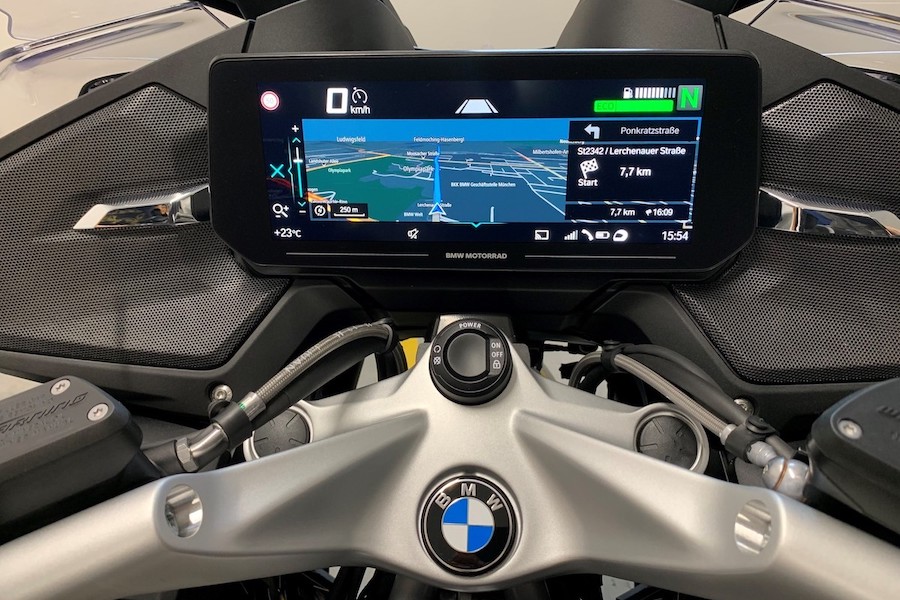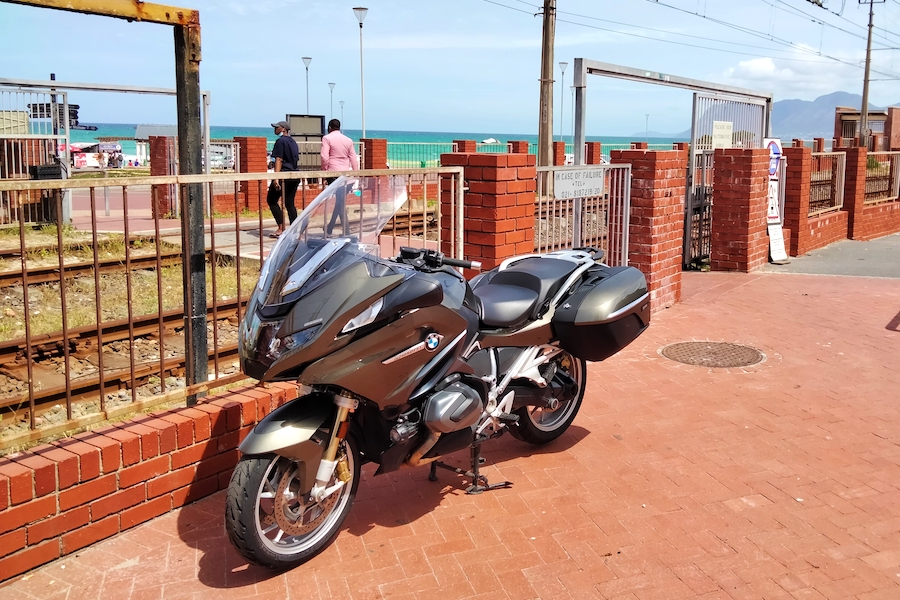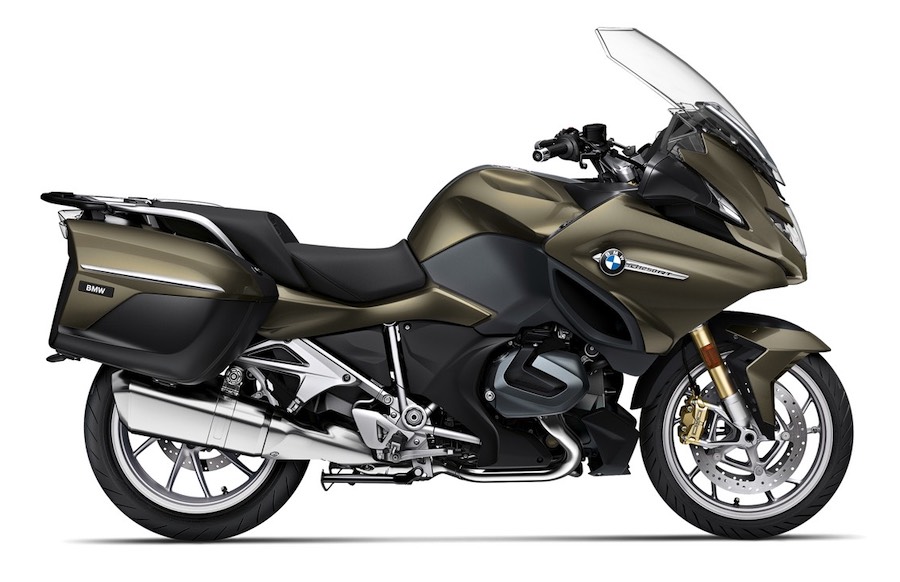BMW R 1250 RT – Road Test
The BMW R 1250 RT marries the big ShiftCam boxer to a fairing and screen that almost seals the rider from the elements. Can this grand tourer steal some thunder from the big GS?
In South Africa, only delivery bikes outperform the BMW R 1250 GS… when it comes to sales. This is interesting, especially considering that a fancy pharmacy bike costs R30 000, while the big GS costs R300 000.
To be more accurate: 1250 GS prices start at R293 100 and end at R368 900, before the buyer adds extras. For fans of these BMWs, however, they are worth every cent. Few motorcycles combine low flying and high comfort so well, and it’s certainly not scared of dust on its takkies (although some of the riders are).
The source of the GS’s effortless speed is the intoxicating 1 254 cc boxer engine (100 kW / 143 Nm) which also powers the new R 1250 RT. The bike is not entirely new, but rather a face-lift of 2019’s then all-new RT. But what is an R 1250 RT for?

What is it?
RT stands for Reise-Tourer, where GS stands for Gelände/Straße, roughly meaning road and field. They’re very different beasts, appearing completely unrelated. The RT’s belly is low to the ground and its front wheel appears small. A wide fairing, reminiscent of Harley-Davidson’s bat wing, replaces the slightly different 2019 design. It’s a little lower now, giving the rider improved visibility.
The windscreen’s height is still electrically adjustable. Together, the two provide formidable resistance to wind, cold and rain. They are so effective that they make waterproof or water-resistant clothing almost unnecessary. On a trip along the coastal R44 in December I was boiling in my waterproof jacket because the screens shielded my body from the rain and cool air. Even my bike jeans stayed dry. The raindrops only reached my helmet, mainly because I’m too tall for motorcycle windscreens, a problem that an after-market extended screen or clip-on deflector will solve.

On the big screen
The other major difference between the new RT and the one launched in 2019 is the instrument panel. There is no sign of analog instruments any longer, and what you get instead is much better: a full-color screen (10.25” or 26 cm), even wider than the display on the latest GS.
It works with a multi-function trip computer so rich in features a skilled hacker will be able to move satellites out of orbit with it. BMW Motorrad’s latest app, which works with the trip computer, is an improvement on their previous attempts. To use the navigation feature, you enter your destination on your phone, as in the Google Maps app. Via Wi-Fi (not Bluetooth) the app and your phone connect wirelessly to the instrument screen. It then displays a map as well as large and clear directional arrows, so you can easily find your destination. After the ride, the app provides interesting information, such as what your maximum speed was and how far you leaned in the turns.

Racehorse and pack donkey
The RT develops quite a thirst when it runs above 120 km/h. The RT’s snout does cleave a path of sorts through the air, but the fairing is so wide that it’s probably a bit, well, blunt. A touring bikes, with a person sitting upright in the saddle, will always have the aerodynamics of a parachute. On top of that, the RT weighs 279 kg (wet), which is 11 kg heavier than the bulky R 1250 GS Adventure and 50 kg over the F 850 GS’s weight!
With a capacity of 25 (usable) litres of petrol, a full tank should give around 450 km, provided you restrain yourself. This is hard, because the engine kicks out that 100 kW (136 hp) at 7 750 r/min and 143 Nm at 6 250 r/min. Even at a low 2 500 r/min, the RT begs you to open the taps, while the trip computer becomes increasingly pessimistic about the DTE (distance-to-empty).
In contrast to the shiny, brick-like aluminum cases adorning GS bikes, the RT has streamlined plastic panniers that sit snugly on either side. These cases are large enough to accommodate a helmet each or a generous amount of clothes and toiletries. To unlock both cases, simply press a button on the ignition key. Like the GS, the RT features keyless start. Sadly, this means the fuel cap does not have a slot for a traditional key. I often struggled to open the cap, which made me long for a simple, old-fashioned lock.

Tech fiesta
The RT’s significant purchase sum also buys a whack of safety features. When pulling the front brake, the RT activates the rear brake too, and vice versa. ABS Pro, a standard feature, allows safe braking in corners, even when the bike leans over significantly. The control unit will also distribute the braking force between front and rear to get the best result. Nowadays, premium motorcycles also get decent LED headlights and the RT’s are very effective. Fork out additional money when you order an RT, and the lights will turn with the steering wheel.

The RT’s big tech trick is the optional Active Cruise Control (ACC). It uses radar sensors to adjust the RT’s speed in accordance with that of the vehicle in front of it. In my opinion, ACC makes more sense in a car, where you often have no choice but to sit behind the vehicle in front of you. With a powerful motorcycle, overtaking is child’s play. I suppose ACC can be useful if you have to concentrate on a phone call. Other safety features are DTC (dynamic traction control), which prevents the rear wheel from slipping, and a (fog)horn so loud it wakes the dead.

Ride, handling and suspension
Using the familiar BMW Telelever set-up, the 1250 RT’s suspension is similar to that of the 1250 GS. This means the ride is comfortable, while road holding and handling are very good, especially considering the bike’s mass. It floats like a magic carpet, steers easily, and it doesn’t nose dive under hard braking. Electronically adjustable suspension is available as an option.
The seats are wide and comfortable, and both can be heated. Thanks to good aerodynamics in the design, the RT creates a quiet, invisible cabin that makes it easier to travel further and faster than on a 1250 GS.

Improvements for the next facelift?
There’s a tiny glove box for your smartphone, where its battery can be charged by induction or USB cable, and it has a small fan that prevents overheating. But, the case is too small for medium sized to large smartphones, especially if the phone wears a protective cover.
When seated, tall individuals could find the angle at which their knees bend too acute. It can get uncomfortable, so for those riders a tall adventure bike will be a better fit.
The RT occupies a unique place – a small category that may become extinct as adventure bikes claim the touring sector. For riders who want to shield themselves from the elements and travel huge distances at speed, the RT is the ultimate sporty tourer.
Specifications
Engine 1 253 cc air- and liquid-cooled boxer twin with ShiftCam variable intake camshaft control.
Transmission 6-speed with anti-hopping (wet) clutch and drive shaft
Power 100 kW @ 7 750 rpm
Torque 143 Nm @ 6 250 rpm
Weight 279 kg (wet)
Seat height 805 to 850 mm, depending on model (lower seat available)
Fuel tank 25 litres + 4 litres in reserve
Consumption 4.75 litres/100 km (claimed)
Warranty 5 years (unlimited km)
Price R 341 600 to R 353 100 (excluding options, in January 2022)





